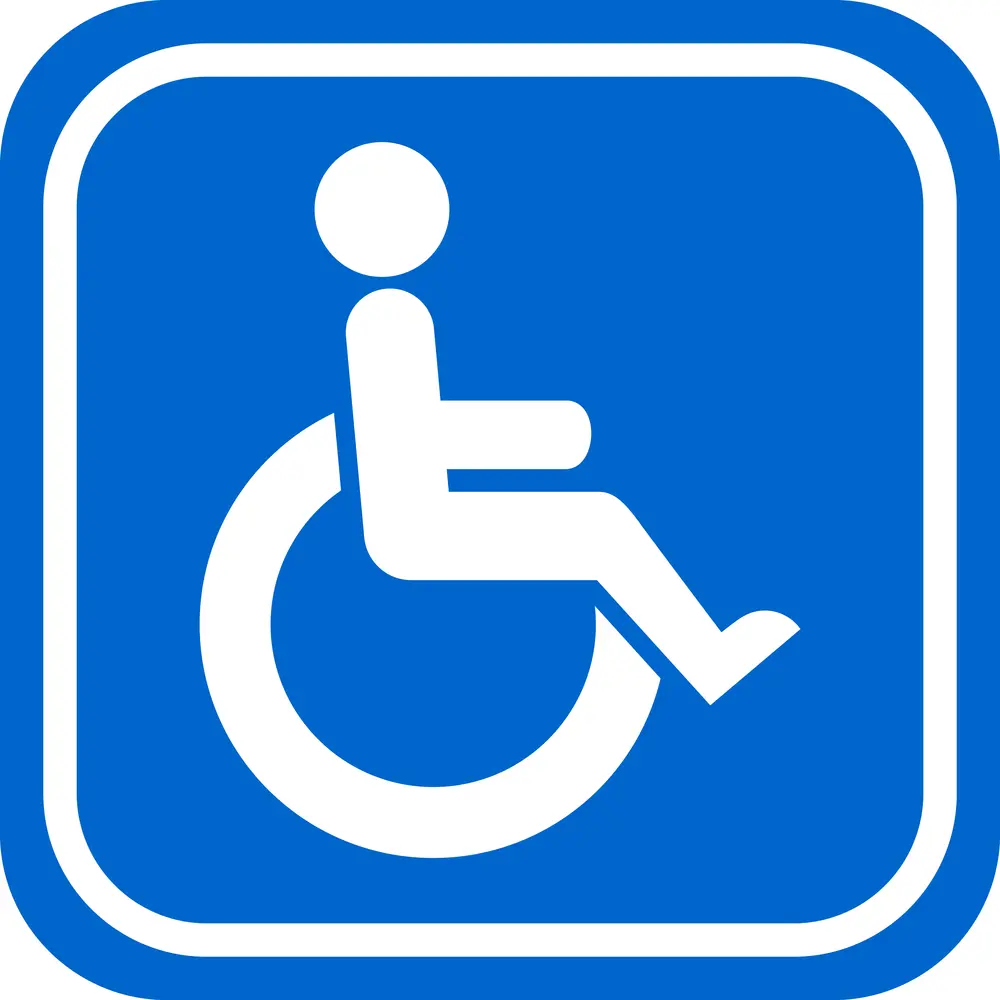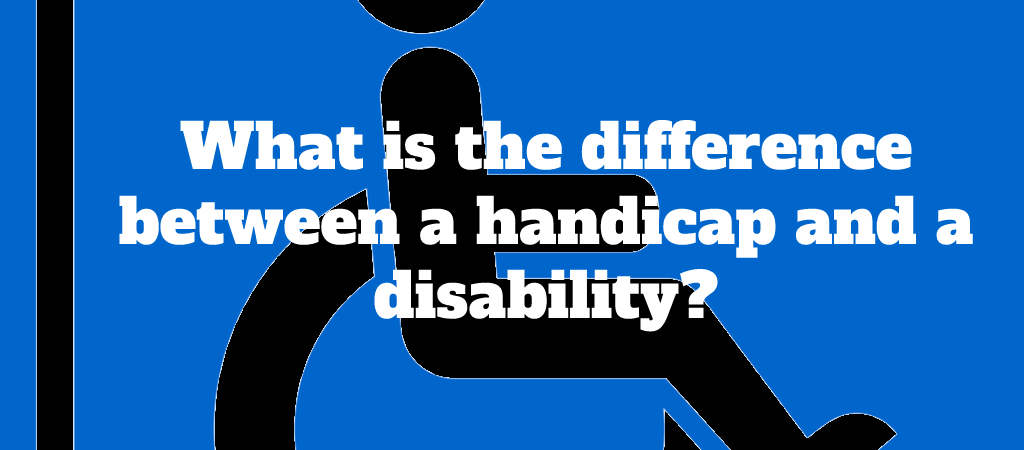The world health organization defines a disability as any restriction or lack of ability to perform an activity in the manner or within the normal range for a person.
Handicaps, on the other hand, are impairments that result from physical disabilities and can limit activities in terms of duration, intensity, and quality.
For example, a person with cerebral palsy may have difficulty walking and require assistive devices to help them move around. Such impairment would be considered a handicap even though the underlying cause is a disability.
In this article, readers can expect to understand the differences between a handicap and a disability.
We will look at examples of both disabilities and handicaps, as well as how they affect individuals and their ability to perform daily activities.

Definition for disability
A disability is any condition that affects an individual’s physical, mental, or emotional functioning. It prevents them from participating in activities or engaging socially to the same extent as someone without a disability. This can include autism spectrum disorder, cerebral palsy, hearing impairment, and vision loss.
Definition for handicap
Handicaps are impairments that limit an individual’s ability to perform tasks or activities, either temporarily or permanently. These handicaps can be physical, mental, or emotional and can vary in severity.
For example, a person with a spinal cord injury may not be able to ambulate without the use of a wheelchair. This would be an example of a handicap, even if the underlying cause is a disability.
It’s important to note that handicaps, unlike disabilities, are often seen as temporary and can improve over time or with the help of medical interventions.
Politically correct terminology
When referring to someone with a disability or handicap, the term “person with a disability” is considered to be the most politically correct. This is because when referring to handicaps or disabilities, it should be done in a respectful manner that recognizes their challenges while emphasizing their abilities and strengths.
Functional limitations between disabled and handicapped individuals
The World Health Organization (WHO) defines a functional limitation as any restriction, or lack of ability to perform an activity in the manner or within the range considered normal for a human being. This includes limitations due to physical, psychological, cognitive, and social impairments.
It is important to note that a functional limitation is not necessarily caused by a disability but may result from a handicap.
The physical limitations between disabled individuals and those who are handicapped vary depending on the individual’s level of disability or handicap.
Disabled individuals may have impairments that affect their mobility, sight, hearing, or mental health.
Handicaps, however, refer to their limitations imposed due to physical disability ranging from difficulty walking to complete incapacity to move.
For instance, a person with cerebral palsy may have difficulty walking due to their physical impairment but may not be considered disabled because of the limitations imposed by their medical condition. This individual would, however, be considered handicapped as they lack the full range of mobility considered normal for a human being.

What are five differences between handicap and disability?
- A disability is a restriction or lack of ability to perform an activity in the manner or range considered normal for a person. In contrast, a handicap is an impairment that limits activities due to a physical disability.
- Disability relates to physical, psychological, cognitive, and social impairments, whereas handicap is limited to physical impairments.
- A disability can range from minor to severe, while a handicap is defined by the limitations imposed due to physical disability.
- Disabled individuals may have difficulty performing daily activities, but their range of activity may be greater than those with handicaps due to their physical impairment.
- Disability is a general term for a range of physical, mental, and emotional impairments, whereas handicap refers specifically to a physical disability.
In conclusion, the difference between a handicap and a disability is that handicaps are limited to impairments caused by physical disabilities. In contrast, disabilities can range from minor to severe in terms of range and activity.
It is important to understand these differences to better support individuals with physical impairments and ensure they receive the appropriate care.
The different types of disabilities and handicaps
The five most common types of disabilities are developmental disabilities, hearing impairments, vision impairments, and intellectual disabilities.
One example of a handicap is difficulty with mobility. People who are physically disabled may be unable to walk, needing wheelchairs or other assistive devices to move around. This can be caused by conditions such as cerebral palsy, muscular dystrophy, multiple sclerosis, and post-polio syndrome.
Can a person be handicapped but not disabled?
A person can be handicapped but not disabled. Handicaps are physical impairments that limit activities due to physical limitation. At the same time, disabilities are restrictions or lack of ability to perform an activity in the manner of a person.
Regarding physical impairment, handicaps typically involve more severe limitations imposed by the person’s medical condition than disabilities. Therefore, a person can be handicapped but not disabled if their physical impairment does not limit them to the same degree as someone with a disability.
For example, a person with cerebral palsy may have difficulty walking due to their impairment but may not be considered disabled because of the limitations imposed by their medical condition. This person would, however, be considered handicapped as they lack the full range of mobility considered normal for a person.
What qualifies a person as handicapped?
Here are 3 examples of what could qualify a person as handicapped:
- Being unable to perform activities that are considered normal for a person due to a disability
- Meeting the definition of disability stated in the Americans with Disabilities Act (ADA); and
- An impairment substantially limits one or more major life activities, such as walking, seeing, hearing, speaking, and working
International criteria to qualify for disability and handicap
The WHO provides an international classification to help determine disability and handicap. They define disability as “a restriction or lack of ability to perform an activity in the manner or within the range considered normal for a person.” Handicap is “an impairment that limits activities due to physical limitation.”
The WHO criteria for both disability and handicap include age, education level, socio-economic status, and access to health services. These criteria assess the degree of impairment and its impact on daily life activities.
What about developmental disabilities?
Development disabilities are classified as a type of disability rather than a handicap.
Developmental disabilities are intellectual impairments that begin before age 18 and continue throughout a person’s lifetime, affecting their cognitive function in social, intellectual, and motor skills.
These intellectual disabilities typically cause limitations in most or all areas of daily life, including communication, language, self-care, and learning.
For individuals with an intellectual disability, support systems such as special education, assistive technology, home health aides, and job coaching can help them to lead self-determined lives.
What’s your disability if you’re blind
Blindness is a disability that affects the visual system and can have various causes. It can be caused by congenital birth defects, such as being born blind or born with nystagmus, or retinal diseases, such as macular degeneration. It can also be acquired later in life due to glaucoma or optic neuritis.
In these cases, a person is considered disabled even if their vision can be improved with corrective measures such as eyeglasses or contact lenses.
The overall effect of the impairment on daily life activities, including education and employment, is considered when classifying a person as having a disability.
Where can family members get more information about a loved one with a lifelong condition?
Family members of a loved one with a lifelong condition can find more information from various sources.
Depending on the condition, family members could contact the patient’s doctor or specialist for more detailed information and guidance. Other resources include local support groups and organizations dedicated to specific impairment disabilities.
Many national organizations have websites that provide vital educational materials, support networks, and resources for people with impaired disabilities.
In addition, physical therapists may be able to provide more information about body functions and how impairment disability can affect daily life activities.
Family members should remember that impairment disability and handicap do not have to limit their loved one’s potential, as many resources are available to help them lead successful, independent lives.
Before you go
We’ve covered a lot in this post. Our writers have written about anatomical structure or function, certain tasks for the disabled, and dealing with constant pain.
If we’ve missed anything, please let us know. We’ll include it in the article.

